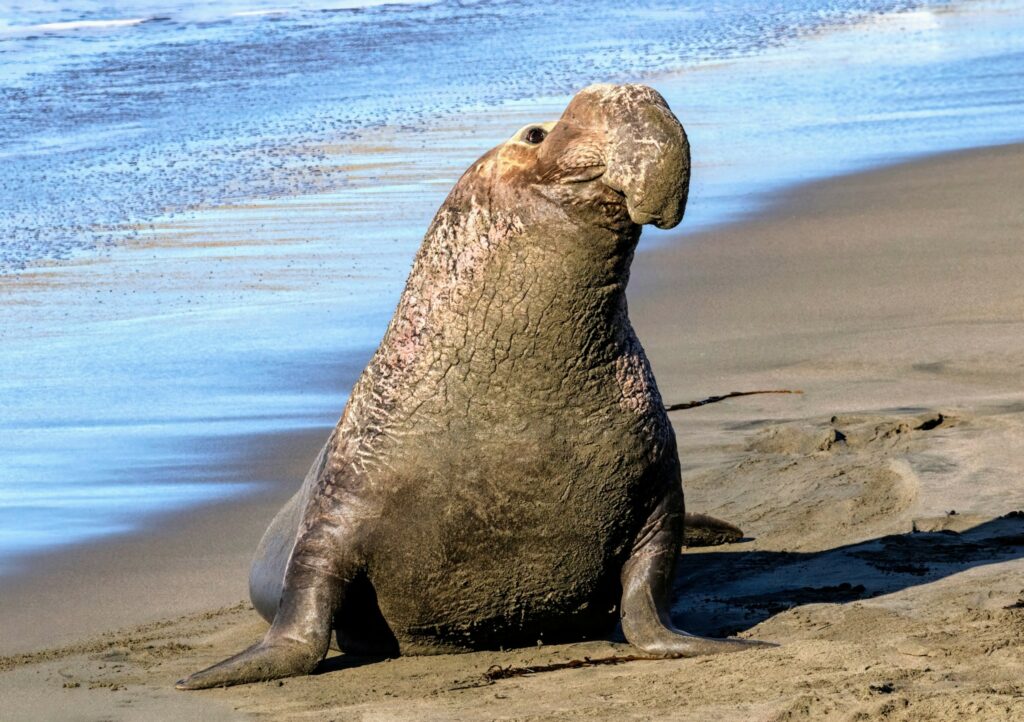Impact of Hunting on Genetic Diversity of Northern Elephant Seals
A research team conducted a study to examine the long-term genetic effects of hunting on northern elephant seals. The findings, published in Nature Ecology and Evolution, revealed significant genetic scars in the seal population due to historical hunting that nearly led to their extinction.
At the start of the 20th century, northern elephant seals faced dramatic declines as a result of extensive commercial hunting between 1810 and 1860. These activities nearly wiped out the species across its geographical range, with experts estimating that there were fewer than 25 seals left by the end of this period.
Since then, the population has made an impressive recovery, growing to approximately 225,000 individuals by 2010. However, despite this resurgence, the genetic impact of near-extinction events continues to affect these animals today.
For their study, researchers used a comprehensive approach that included genetic analysis, health records review, population modeling and simulations. They discovered that while some harmful genes were eliminated from the gene pool during periods of intense decline in northern elephant seal populations.
The long-term genetic consequences of intense elephant seal hunting are still being studied. Researchers are examining the genetic structure and diversity of elephant seal populations to better understand the enduring effects of historical hunting. By studying the genetic consequences of intense hunting, scientists can gain valuable insights into how human activities can shape the genetic diversity and health of natural populations over time
The Lingering Genetic Consequences of Intense Elephant Seal Hunting
The intense hunting of elephant seals in the 19th and early 20th centuries has had a lasting impact on their genetic diversity and population structure. Elephant seals were hunted for their blubber, which was used to make oil for lamps and machinery, as well as for their skins, which were used to make shoes, clothing, and other items. This relentless hunting led to a severe reduction in the population of elephant seals, with some species coming dangerously close to extinction.
As the populations of elephant seals dwindled, their genetic diversity also decreased. Genetic diversity refers to the variety of different genetic characteristics within a population, and it is crucial for the long-term survival of a species. When a population becomes small and isolated, as was the case with elephant seals, genetic diversity is reduced, and the risk of inbreeding and genetic disorders increases. The genetic consequences of intense elephant seal hunting can still be observed today, even as the populations of elephant seals have rebounded in some areas.
Impact on Genetic Diversity
Once abundant throughout the world’s oceans, elephant seals were hunted to near extinction in the 19th century. Northern elephant seals, for example, were reduced to a population of as few as 20 individuals off the coast of Mexico. This severe reduction in population size had a direct and lasting impact on the genetic diversity of elephant seals. Many alleles, or different forms of a gene, were lost, leading to reduced genetic diversity within the remaining populations.
Genetic Diversity and Fitness
Low genetic diversity can have negative effects on the fitness and survival of a population. Inbreeding can lead to an increase in harmful genetic conditions, reduced fertility, and overall decreased fitness. As a result, the genetic consequences of intense elephant seal hunting can still be observed today, with some populations exhibiting signs of reduced fitness and genetic disorders.
Population Structure and Connectivity
The intense hunting of elephant seals led to the fragmentation and isolation of populations. As a result, gene flow, or the movement of genes from one population to another, was restricted. This further reduced genetic diversity and increased the risk of inbreeding and genetic disorders. While some populations have rebounded in size, the genetic consequences of this historical fragmentation can still be observed in the population structure and connectivity of elephant seals today.
Conservation Efforts and Genetic Rescue
Conservation efforts have played a crucial role in the recovery of elephant seal populations, but the genetic consequences of intense hunting still persist. To mitigate these effects, conservationists have been working on
According to lead author Dr. Joseph Hoffman from Bielefeld University’s Evolutionary Population Genetics group and senior author Dr. Kanchon K. Dasmahapatra’s research team was surprised to find no signs of health issues related to inbreeding despite reduced genetic diversity in these once-threatened animals.
This case is critical for shedding light on how species with reduced genetic diversity respond differently to environmental threats such as climate change or habitat alterations caused by anthropogenic activities or natural outbreaks like diseases.
The study’s implications are quite far-reaching for conservation genetics – it serves as a fundamental demonstration illustrating how diminishing genetic diversity can influence species’ ability not only thrive but also adapt effectively against future threats for biodiversity conservation efforts.
Ultimately understanding Conservationists can use this knowledge derived from studying bottlenecked populations like northern elephant seals have crucial insights into implementing strategies effectively protect existing genotypic differences while promoting resilience among diverse ecosystems facing similar challenges presented by environmental change which could prove challenging if not attended early through policy formulation grounded empirically feasible decisions translating science into necessary policies vital bridging current existing gap making our future look bright ahead!
